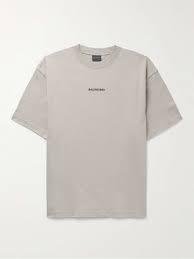Acrylic paints are celebrated for their versatility and vibrant hues, but they also possess the capability to mimic the ethereal beauty of watercolors. Watercolor paintings are cherished for their soft, flowing washes and layered designs, creating a dreamy, luminous look. With the right techniques, you can transform acrylics to achieve these stunning watercolor effects for your Designer Surfboard Art Designs.
Understanding the Allure of Watercolor
Before delving into the techniques, it’s essential to grasp the charm of watercolor paintings. As explained by experts at The Metropolitan Museum of Art, watercolors have been a beloved medium for centuries due to their luminosity and transparent colors. The blending of pigments with water creates soft, stunning portraits, and with some adjustments, acrylics can achieve a similar effect.
Watercolor paintings are defined by their ability to produce fluid, seamless transitions between hues. This is primarily due to the medium’s unique interaction with water, which allows pigments to disperse in ways that create soft edges and delicate color blends. Historically, watercolors have been favored for their immediacy and the ease with which they can convey mood and atmosphere. Artists like J.M.W. Turner and Winslow Homer mastered this medium to depict landscapes, seascapes, and intricate botanical illustrations, capturing the essence of their subjects with light and color.
Preparing to Create Watercolor Effects with Acrylics
Preparation is paramount for achieving the desired watercolor effect with acrylics. The right materials ensure that your acrylics have the appropriate consistency to replicate the fluid and transparent qualities of traditional watercolors.
Essential Materials:
- Acrylic Paints: Opt for high-quality acrylic paints, as they offer better pigments and consistency. Transparent paints are ideal for layering effects.
- Water: Use clean, distilled water to avoid impurities that might affect your paint.
- Brushes: Soft brushes are best for water-based techniques. Round and flat brushes in various sizes provide versatility.
- Canvas or Watercolor Paper: Choose watercolor paper or acrylic-friendly canvas with a smooth surface to handle the diluted paint.
- Palette: A mixing palette is essential for blending and diluting your paints.
- Spray Bottle: Handy for keeping paints moist and for specific techniques.
- Palette Knife: Optional, for mixing paints.
Techniques for Achieving Watercolor Effects with Acrylics
Several methods can help you achieve a watercolor effect with acrylics. The key is diluting the paint to create the fluid texture characteristic of watercolors.
1. Dilution and Layering Technique
This basic method involves mixing acrylic paint with water to achieve a thin, watery consistency. Start with a small amount of paint and gradually add water until the desired fluidity is reached. Apply the diluted paint in thin layers, allowing each layer to dry completely before adding the next. This technique builds up color intensity gradually, akin to traditional watercolor painting. Use a damp brush to blend the edges of each layer, creating soft edges and smooth transitions between colors.
The dilution and layering technique is foundational for creating watercolor effects with acrylics. Begin by preparing your workspace with all necessary materials within easy reach. Start with a small dollop of acrylic paint on your palette and add water incrementally, mixing thoroughly until you achieve a thin, ink-like consistency.
2. Wet-on-Wet Technique
Begin by wetting the paper or canvas with clean water, using a spray bottle or wet paper towel. While the surface is still wet, apply diluted acrylic paint. The paint will spread and blend naturally, creating soft edges and fluid effects. Control the paint flow by tilting the canvas, which can generate abstract patterns or fluid backdrops.
The wet-on-wet technique involves working with a thoroughly saturated surface. Spray your canvas or paper lightly but evenly with water, ensuring it is damp but not dripping. Quickly apply the diluted acrylic paint to the wet surface. The paint will disperse and blend seamlessly, creating organic shapes and soft transitions.
3. Dry Brush Technique
Surprisingly, a dry brush can also achieve a watercolor effect. Dip a dry brush into a small amount of undiluted or slightly diluted acrylic paint, then lightly drag the brush across the surface with minimal pressure. This technique creates a textured, scratchy effect. Use it over areas where the paint is still wet to add contrast and texture, ideal for landscapes and foliage.
The dry brush technique offers a distinct contrast to the smooth, fluid effects typically associated with watercolors. Use a dry brush with just a small amount of paint on its bristles, applying it with a light touch to create a scratchy, textured effect. This technique is excellent for adding detail and texture to your work, such as the rough bark of trees or the delicate blades of grass in a landscape.
4. Spray Bottle Technique
For a more organic or abstract feel, use your spray bottle. Add very diluted acrylic paint to the bottle and lightly spray it onto your canvas or paper. Control the spray intensity to create various effects. Layer these colors and blend them with a sponge or brush for added depth.
The spray bottle technique introduces an element of spontaneity to your artwork. Fill a spray bottle with a highly diluted mixture of acrylic paint and water. Lightly mist the paint onto your canvas or paper, experimenting with different spray intensities and distances to achieve varied effects.
Tips for Perfecting the Acrylic Watercolor Effect
Mastering the acrylic watercolor effect requires practice and experimentation. Here are some tips to guide you:
- Control Water Flow: Use a clean, damp brush or sponge to manipulate the paint flow on the surface, achieving smooth transitions and gradients.
- Experiment on Different Surfaces: Test your techniques on both watercolor paper and canvas to observe how the paint behaves on each.
- Invest in High-Quality Materials: Good quality transparent acrylic paints and brushes can significantly enhance the ease and quality of achieving watercolor effects.
Conclusion
Unlocking the potential of acrylic paints to create watercolor effects opens a new realm of artistic possibilities in wall decor coastal. By mastering these techniques and understanding the nuances of the medium, you can produce captivating, ethereal artworks that capture the essence of traditional watercolors with the vibrancy and versatility of acrylics. With practice and experimentation, you’ll find your unique style and approach, enabling you to create stunning, luminous pieces that showcase the best of both worlds.






Как продвигать сайт успешно, проверенные приемы.
Как добиться успеха в SEO, выводы.
Узнайте, как продвигать сайт, прибыль.
Инновационные методы продвижения сайтов, которые стоит учитывать.
Углубляемся в продвижение сайтов, которые вы должны знать.
Что важно для онлайн-продвижения, которые принесут плоды.
Лучшие агентства по SEO, на которые можно положиться.
Типичные проблемы при продвижении, чтобы не потерять трафик.
Как продвинуть сайт без бюджета, освойте.
Лучшие онлайн-сервисы для SEO, которые обязательны к использованию.
Показатели успешного SEO, которые нельзя игнорировать.
Контент как основа продвижения сайтов, что имеет значение.
Успех в локальном SEO, рекомендации профессионалов.
Психология пользователей и SEO, которые помогут улучшить результаты.
Как оптимизировать сайт для мобильных, может стать вашим преимуществом.
SEO против контекстной рекламы, по результатам выберите.
Почему важны бэклинки, чтобы повысить авторитет.
Ежегодные тренды в SEO, изучите подробнее.
Как продвигать сайт в социальных сетях, вовлекайте пользователей.
Топовые практики по оптимизации, которые изменят вашу стратегию.
seo оптимизация сайта https://1prodvizhenie-sajtov-52.ru/ .